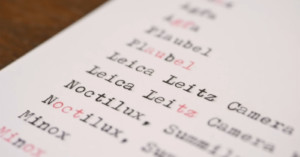
Interpreting the Language of Photography
If you are not responsible for the meaning behind your photographs then who is?

If you are not responsible for the meaning behind your photographs then who is?

While photography and linguistic language share characteristics, when it comes to actually applying theories and practices between one and the other, it can be hard to remain coherent. This is down to the flaw in thinking that just because a comparison can be made aspects can be transposed between them.

My particular interest in photography aims for hitting certain notes in the image, regardless of content. So whether I’m shooting landscapes or my garden, friends at a party, or my kids on vacation, I’d say the approach is consistent.

A leading textbook on creative photography, released in 1980, devotes more than 90% of its 460 pages to technical considerations — how cameras and lenses work, darkroom procedures, lighting — and just a few pages to aesthetics and composition.

Germany has a long history of producing some of the best cameras and lenses ever to appear in the history of photography, but German brand names can be a bit tricky to pronounce. In this 8.5-minute video, photographer Maximilian Heinrich of Analog Insights shares the native German speaker's pronunciation of some well-known brands.

Preparing for a trip to a foreign country where you don't know the language? If you don't have an Internet-connected phone handy, a camera can help you out. Redditor Jhojgaard regularly travels to various countries around the world, and suggests that storing some key photos on your camera can come in handy when you're in a communication crunch.
Things that are useful to store on your memory card include the names of places you need to get to and common things you might need (e.g. a certain subway station, the restroom, a taxi). If you have a smartphone with you, you can toss all of the "translation photos" into a separate album.